When I first drove down to live in Cornwall more than 20 years ago, I was met by a graffiti message on a railway bridge near Truro: “Go home, English!” I should have taken it personally. I should have politely turned around to head back across the Tamar. I was exactly the sort of incomer who was swamping the last little islands of Cornishness. But in fact, I found it heartening. Cornwall was not England – that was why I’d come.
Since then, Cornwall’s distinctiveness has, rather than being smothered, become resurgent. In those days, the monochrome simplicity of St Piran’s flag was an unusual sight, confined to places of nationalist fervour like Hellfire Corner at Redruth rugby ground. Now it is everywhere – in the logos of Cornish companies, on car stickers (usually with some jokey tag like “Pasty on Board”), or fluttering importantly from Cornwall council buildings. In the late 1980s and early 1990s the Cornish language was likewise invisible, a barbarous and long-vanished practice, like piracy and smuggling. Now it receives government funding to be taught in schools and appears on the bilingual signs at the Cornish “border” on the A30, and on street signs for every new housing development.
It is tempting to regard such reinventions as quaint, like Morris dancing or beating the bounds; some of the most vigorous St Piran’s flag-waving comes from English, or even American, settlers. But Cornwall’s separateness runs deeper than that. It is less folksy and more physical, something from the soil itself, like the radon gas that seeps out of the granite of Carnmenellis or West Penwith.
The survival of Cornish identity can be traced, on one level, to the quirk of geomorphology and tectonics that placed the sea on three sides and made most of the fourth out of the river Tamar. The shape is reflected in the name: the “Corn-” comes from the Cornish “kern”, or “horn” ( the Cornish name for Cornwall, Kernow, is now as ubiquitous as St Piran’s flag, and has the same root). Trying to identify Cornwall’s appeal, Jacquetta Hawkes reached for its shape: “Cornwall is England’s horn, its point thrust out into the sea.”
Such a position has always made Cornwall tricky to administer. The Romans didn’t bother trying, as long as their supply of tin was secure. Saxon villagisation did not extend far into Cornwall. When the Tudors tried to unite the realm, the Cornish proved unbiddable. Two of the fiercest rebellions of the time came from the far south-west. In 1497, a revolt against taxation began in the village of St Keverne on the Lizard; within months, 15,000 restive Cornishmen had reached London, where they were soundly routed. In 1997, the Keskerdh Kernow 500 commemorated the revolt tracing the original route from St Keverne to Blackheath. The smaller, more benign band of flag-waving Cornish that wound through the market towns of southern England helped to re-establish the sense of Cornish identity, at least for those who took part.
The second Tudor revolt is no less keenly remembered. The Prayer book rebellion of 1549 was a reaction against the introduction of a vernacular prayer book – in English. Although the liturgy had been said in Latin until then, everyone knew it – and the Creed was uttered in Cornish. The Cornish were right to feel threatened by Cranmer’s innovation, that it would undermine the survival of their own language. The rebels marched east again, “lusty and fresh, and fully bent to fight out the matter”. They besieged Exeter but, in the end they too were defeated, several thousand were killed and the leaders taken to prominent places and hanged.
Examples of medieval plays survive in Cornish, and it was certainly spoken throughout Cornwall and into Devon. Queen Elizabeth I was said to have had a little Cornish, enough to greet her favoured West Country courtiers. But 200 years later, by the end of the 18th century, the last monoglot speakers were dead.
The language continued to be spoken in isolated communities for several generations, brought out to baffle the growing number of visitors from “up-country”. In the 19th century, little was done to preserve the last traces of the language, and it became extinct – just in time for the Celtic revival movement to champion it. In 1901, a group of Cornish worthies set up the Cowethas Kelto-Kernuak (the Celtic-Cornish Society), suggesting that young men strip off to pursue the traditional Cornish sports of wrestling and hurling, while they themselves dressed in druidic robes to celebrate Cornishness, in Cornish, at the annual Cornish Gorsedd.
Apart from the few scraps of literature, there is one everyday reminder of the Cornish language, a faint but constant echo of the county’s non-Englishness: its place names. They have proved a vital part of the revivalists’ attempts to reassemble the vocabulary and structure of Cornish. For the rest of us, the names are a spicy addition to the ceaselessly rewarding pursuit of walking or driving through the county’s back roads.
All those Zs, for instance – from the far west, Penzance (“holy headland”), Nanjizal (“low valley”), and Zennor (from St Senara). The saints themselves offer another dimension to Cornwall’s otherness, making many road signs look as though they’ve been swiped from a hagiographic theme park. Although in fact the 80% of Cornish parishes named Saint-something do not reflect the region’s innate holiness – merely the lack of villages when parish boundaries were drawn.
More than anything, Cornwall’s particularity lies in its abiding and diverse sense of place. No other region of England offers such a range of dramatic landscapes, nor carries such a freight of mythology and projection. Many archaeologists now explain the vast numbers of Neolithic and early bronze age monuments, both on mainland Cornwall and the Isles of Scilly, in terms of ritual or sacred landscape. Areas such as Bodmin Moor and West Penwith, rich in standing stones and stone circles, are believed to have been vast arenas for visual alignments, focusing on certain hills.
Whatever your chosen interpretation of such prehistoric features, and there is no shortage of colourful options, their profusion in Cornwall adds to its mystique. And not just for outsiders. At a meeting of west Cornwall’s pagans, a Cornish speaker told me a story to illustrate the complex web of belief and identity. When he was a boy, his grandfather had taken him to the top of Carn Brea, one of the hills believed to have been significant in prehistory. The old man grabbed his hand and thrust it into the soil. “Feel that, boy,” he said, “that’s the beating heart of Cornwall. But don’t you go telling Grandma – she thinks I’m a good Methodist.”

Retaining a sense of being Cornish has been made more challenging by the growing influx of visitors, many with their own strong ideas of what Cornwall represents. The artists who gathered in St Ives in the 1930s were drawn in part by west Cornwall’s freedom from the Englishness that pervaded the rest of the country. Being a modernist or abstract expressionist was a lot easier when you could contemplate the raw intensity of rock and cliff and sea without any regard for local tradition.
Only one of the more prominent artists was Cornish. Peter Lanyon wrestled with the abstractions his peers practised. The landscape to him was his own past, the presence of his own ancestors: “How they natter at my feet, these fellows!” he wrote. If he saw anyone painting the view out along the coast path, he would stride up to them and say: “You do realise, don’t you, that there are miners working in those cliffs.”
At the Royal Cornwall Museum in Truro, a more figurative exhibition has just opened, presenting working Cornwall in the late 19th century and early 20th centuries. The paintings show an extraordinary mixture of miners and fishermen, farmers and seamstresses, quarry workers and smiths. Henry Scott Tuke’s maritime portraits of Falmouth’s seamen hang alongside workers from mining districts, including Dicky Nine Lives, a miner who miraculously survived falling down a shaft.
Cornwall is not big – a tapering sliver of land no more than 80 miles long. But within it, you can travel a short distance and be in a different world. Go inland from the glitzy coastal surf and sailing resorts, and you reach empty moorland, or tidal creeks fringed with oakwoods, or the weird, white landscape of the China-clay country, or the deprived, thickly populated districts around Redruth and Camborne. The traditions of the Cornish are likewise hidden from those who visit only the coast.
To many Cornish nationalists, this week’s recognition of the Cornish people as a minority, alongside the Welsh and Scots, is merely a step on the path to a devolved assembly, the re-establishment of the old Stannary Parliament, whose legislative powers were never officially revoked. To David Cameron, quick to point out that his daughter Florence was born in Cornwall, it allows a dig at Scottish independence by celebrating the diverse family over which Westminster so happily presides.
There is some scepticism west of the Tamar about what their new status will really mean. But it can do no harm to remind those unfamiliar with the south-west that the Cornish are not really English, and that Cornwall is not really England.
Philip Marsden’s book on Cornwall, Rising Ground: A Search for the Spirit of Place, will be published by Granta in October
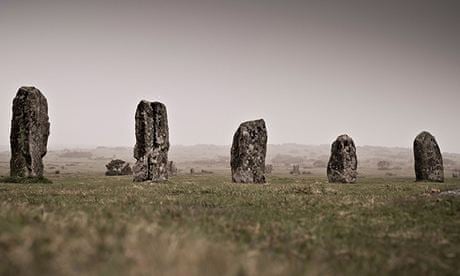
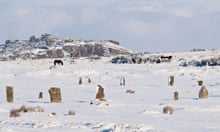
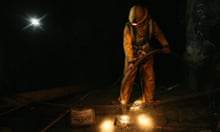




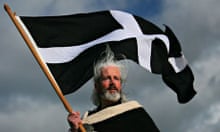
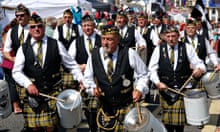
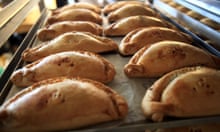

Comments (…)
Sign in or create your Guardian account to join the discussion